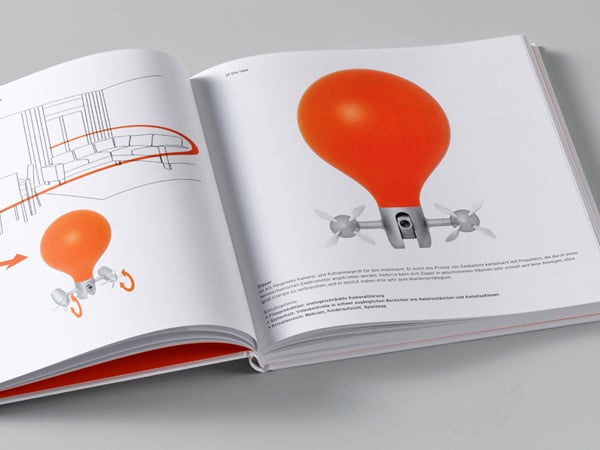Industrial Design Books
Books shelved as industrial-design: The Design of Everyday Things by Donald A. Norman, Sketching: Drawing Techniques for Product Designers by Koos Eissen. Sweetim For Messenger. Because design is a holistic process of development it consists of a large range of disciplines. Honestly, i'm studying Industrial Design, but haven't come. Digg_url = ‘//www.fastcompany.com/blog/cliff-kuang/design-innovation. The 30 Most Important Books for. 30 most important books for industrial designers. Books shelved as industrial-design: The Design of Everyday Things by Donald A. Norman, Sketching: Drawing Techniques for Product Designers by Koos Eissen.
When you study design at The Art Institutes system of schools, you’re pushed, challenged and supported by talented faculty* and a community of Creative Warriors. You can work hands-on with the hardware and software you’ll use as a design professional, helping you make a smooth transition from classroom to workplace.

Whether you’re looking to pursue an advertising degree, or study web, industrial, or interior design, we can help you lay the groundwork for an exciting, extensive array of design careers. With an advertising degree from The Art Institutes, you can turn your talent into a positive impact on our culture and economy. Unique among advertising schools, our comprehensive program covers both the creative and business sides of advertising, drawing on the experience of your instructors. You can learn to push the boundaries of how technology impacts the way we learn, think, choose and interact. And you can be prepared to enter this dynamic field in entry-level positions such as junior art director, production designer, assistant account executive, marketing coordinator, project coordinator and web producer.
The creativity and craft of graphic and web designers is virtually everywhere you look—from books, product packaging, and CDs to digital advertisements, websites and interactive installations. And innovative product packaging. But effective design is more than just appearances. It’s understanding how to communicate conceptually, how to make everything from typography, colors, illustration, and photography work together as a whole to grab attention and leave a lasting impression. In our graphic design school, you can elevate your talents and learn the skills that will prepare you to excel in such entry-level positions as graphic designer, motion graphics designer, production artist, or junior art director. The Art Institutes is a system of over 45 schools throughout the United States. Programs, credential levels, technology, and scheduling options vary by school and are subject to change.
Not all online programs are available to residents of all U.S. Several institutions included in The Art Institutes system are campuses of Argosy University.
Administrative office: The Art Institutes,1500 Penn Avenue, Pittsburgh, PA 15222 © 2017 The Art Institutes. All rights reserved. Our email address is. See for program duration, tuition, fees and other costs, median debt, salary data, alumni success, and other important info.
Calculator Olivetti Divisumma 24 designed in 1956 by Marcello Nizzoli Industrial design is a process of applied to that are to be manufactured through techniques of. Its key characteristic is that design is separated from manufacture: the creative act of determining and defining a product's form and features takes place in advance of the physical act of making a product, which consists purely of repeated, often automated, replication.
This distinguishes industrial design from -based design, where the form of the product is determined by the product's creator at the time of its creation. All manufactured products are the result of a design process, but the nature of this process can take many forms: it can be conducted by an individual or a large team; it can emphasize intuitive or calculated, and often emphasizes both at the same time; and it can be influenced by factors as varied as,, and prevailing social, commercial or aesthetic attitudes. The role of an industrial designer is to create and execute design solutions for problems of form, function, usability,, marketing, brand development, sustainability, and sales.
Contents • • • • • • • • • • • • • • • History [ ] Precursors [ ] For several millennia before the onset of, design, technical expertise, and manufacturing were often done by individuals, who determined the form of a product at the point of its creation, according to their own manual skill, the requirements of their clients, experience accumulated through their own experimentation, and knowledge passed on to them through training. The that underlies the practice of industrial design did have precedents in the pre-industrial era. The growth of trade in the medieval period led to the emergence of large workshops in cities such as,, and, where groups of more specialized craftsmen made objects with common forms through the repetitive duplication of models which defined by their shared training and technique. Competitive pressures in the early 16th century led to the emergence in and of: collections of illustrating decorative forms and motifs which could be applied to a wide range of products, and whose creation took place in advance of their application. The use of to specify how something was to be constructed later was first developed by and during the. In the 17th century, the growth of artistic patronage in centralized monarchical states such as led to large government-operated manufacturing operations epitomised by the, opened in in 1667. Here teams of hundreds of craftsmen, including specialist artists, decorators and engravers, produced sumptuously decorated products ranging from and to and, all under the creative supervision of the King's leading artist.